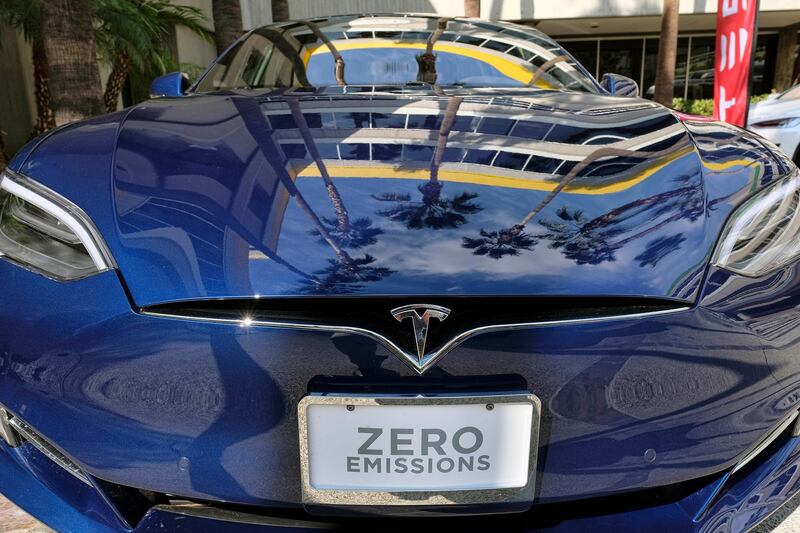Opinions differ on the exact nature of Tesla, ranging from struggling car manufacturer to tech pioneer to something akin to the second coming. Regardless, it is undoubtedly one thing: a money machine.
Not in the sense of Tesla making a lot of money; more that it is a machine for the raising and consumption of money, according to Bloomberg.
All companies are this to one degree or another, of course; it's just that Tesla is more at the "another" end of things. Reliably negative on free cash flow, Tesla depends on a smorgasbord of external funding, from equity raising to vehicle deposits to high-yield bonds to securitised leases to negative working capital. And that smorgasbord rests, of course, on Tesla's famously gravity-defying stock price and faith in chief executive Elon Musk.
Last week, shareholders of Tesla approved a compensation package potentially worth $2.6 billion for Mr Musk, though by a lower margin than US CEOs typically receive on pay votes, Reuters reported.
Excluding votes by Mr Musk and his brother Kimbal, the measure passed with about 73 per cent of votes cast. Including the Musk votes, the award passed with about 80 percent support, Tesla said in a Securities and Exchange Commission filing.
The compensation award includes no salary or cash bonus for the Silicon Valley billionaire, but sets rewards based on Tesla's market value rising to as much as $650 billion over the next 10 years.
We're just a few days away from knowing whether or not Tesla has hit its (much reduced) target for producing 2,500 Model 3s per week by the end of the first quarter. The signs thus far aren't good, which also raises doubts about the 5,000-a-week target for the end of June, Bloomberg said.
Hitting these targets matters for the Tesla money machine on three fronts.
First, reducing that risk-laden reliance on negative working capital and getting a return on the money already spent on production lines relies on producing more cars. Second, analysts currently expect Tesla to burn through $2.7 billion of cash this year - and analysts tend to be optimistic on this stuff. Third, when Moody's rated that bond Tesla sold last August, it was assuming 300,000 Model 3 deliveries this year, which now looks far out of reach.
In other words, Tesla's money machine will almost certainly need to raise more this year due to the Model 3's problems - but those same problems undermine the pitch for selling more equity or debt.
_______________
Read more:
Elon Musk in line for $2.6bn pay day as Tesla shareholders contemplate
Space bases could preserve civilisation after World War III: Elon Musk
_______________
This is happening against a backdrop of rising interest rates. Tesla's debt has jumped in recent years, especially after it took on SolarCity's obligations. Interest expense more than doubled in 2017 and reached the astounding level of one-third of gross profit in the final quarter of 2017:
At the same time, Tesla is moving closer to a maturity wall, with $3.7bn of bonds and credit lines needing refinancing by the end of 2020.
Some $1.7bn of that consists of three convertible bonds falling due between this coming November and the next one. Almost half of it - inherited from SolarCity - is hopelessly out of the money, with conversion prices starting at $560 (Tesla closed Thursday at $309 and change). The rest of it, a $920 million convertible due next March, sports a conversion price of just under $36o; still underwater but within sight of the surface.
Converting that last one to equity would dilute Tesla's free float by 2 per cent. But that could be more palatable than the alternative of replacing it with a straight bond.
As of now, those three bonds pay a weighted-average coupon of just over 1 per cent, or about $18m a year. All else equal, assuming they were all refinanced at spreads similar to where Tesla's 2025 bonds trade now, but factoring in the forecast increase in Treasury yields, that would jump to 7 per cent, or $120m. Putting that in context, Tesla's entire interest expense last year was $471m.
A rebound in the stock price would take much of this pain away, of course. Half those convertibles would transform into equity and Tesla could simply issue more shares in general or more debt, even at higher rates.
Getting there, though, needs one thing above all else: a steady stream of Model 3s. Cranking up the money machine depends on cranking up that production line.
And given Tesla's mounting burdens, that needs to happen soon.
The National





